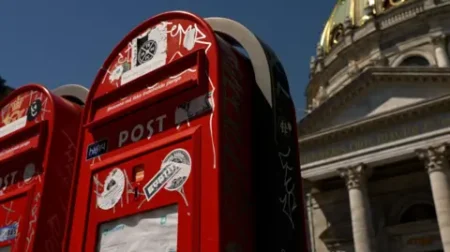In a world that’s rapidly shifting towards digital communication, the realm of agriculture is also witnessing a transformation. A recent article highlights the growing trend of farmers leveraging social media to document their lives and work, aiming to connect with audiences far beyond their fields. By sharing their daily activities through various platforms, these farmers are not just promoting their produce but are also educating and engaging the public about the realities of modern farming.
One prominent figure emerging from this digital farming community is Mike Wilkins, who has taken to platforms like TikTok and Instagram to share his farming experiences. Engaging with his followers in a way that is both informative and entertaining, Wilkins recently showcased a detailed episode titled “What we’ve been up to on the farm.” Filming himself testing barley for harvest, he combined practical insights with an approachable persona, making lessons about agriculture accessible to the average viewer. With his upbeat nature and previous experience as a contestant on the Great British Bake Off, he has managed to carve out a niche that balances entertainment with education. Wilkins emphasizes the importance of showing the positive aspects of farming, countering the often bleak narratives that proliferate in media. “It’s nice for them to have something direct from the farmer’s mouth, literally,” he remarked, highlighting the transparency social media can offer.
However, Wilkins is not the only farmer capturing attention on social media. Chloe Burke, another farmer, provides insight into the innovative ways farms are adapting to contemporary digital trends. Working on Lane End Farm in Somerset, she has embraced her role as a social media manager, capturing the day-to-day operations through her lens. With her drone, she films aerial views of the farm, providing stunning visuals that connect with viewers in a unique and exciting way. This fresh perspective, innate to younger generations, offers a glimpse into the life of modern farming, revealing the charm and challenges that lie behind the scenes.
On the Mendip hills, Dom Northmore illustrates another facet of this phenomenon, utilizing social media to share the fun and engaging side of agricultural work. Despite facing challenges due to environmental changes affecting yields, Northmore’s approach to social media is one of celebration, focusing on the aesthetics of farming rather than dwelling on frustrations. His posts aim to create a sense of connection between the work they do and the wider public, illustrating the realities while highlighting the joy of the craft.
In a significant initiative, the BBC is organizing its own live event, the “Farmwatch” project, aiming to further bridge the gap between urban audiences and rural life. By streaming a live feed of Robin Aird’s harvesting process directly to the public, the BBC intends to demystify farming and allow viewers to interact with agricultural life in real-time. This project underscores the shift towards transparency in agriculture, providing a platform for dialogue and engagement between farmers and audiences.
Across various social media platforms—whether on TikTok, Instagram, or Facebook—farmers are increasingly becoming storytellers, inviting observers into their daily lives. These social media stars are transforming perceptions of farming, merging entertainment with education, and fostering a deeper appreciation for where our food comes from. As this trend continues to grow, it undoubtedly reshapes the narrative surrounding agriculture, emphasizing not just the toil and trials, but also the passion and positivity that come from cultivating the land.
In conclusion, the intersection of social media and agriculture presents an intriguing landscape for farmers and consumers alike. As we engage with these narratives, we gain a more nuanced understanding of the modern farming experience—its challenges, innovations, and the sheer satisfaction it yields. This burgeoning trend serves as a reminder of the power of storytelling in agriculture, illustrating how farmers are not just producers, but also vital communicators bridging the gap between their fields and our homes.












